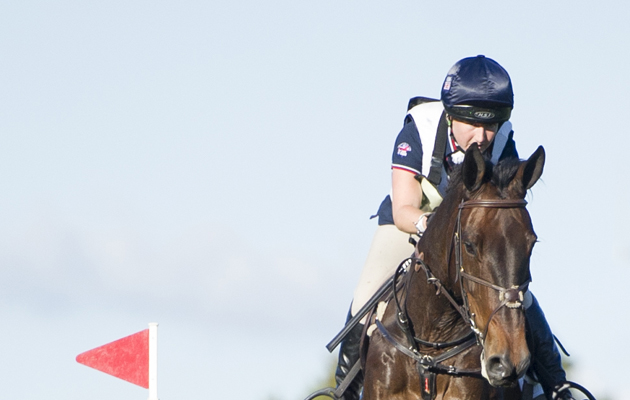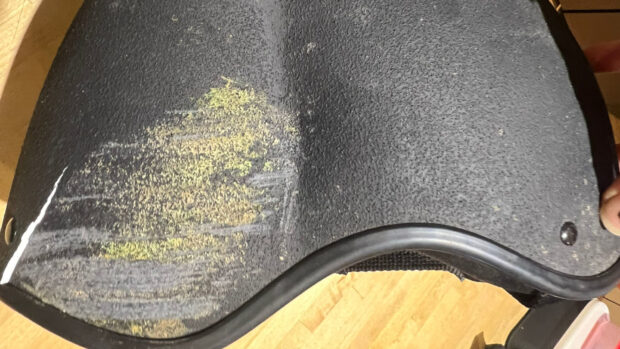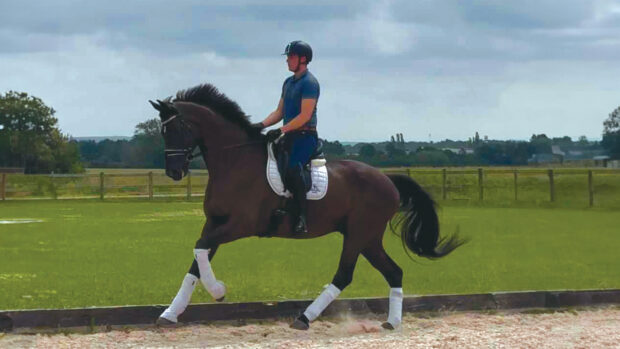Getting back in the saddle after injury can be tough. And getting back to competition after injury can be even tougher. But it’s not just the physical side of things that you need to take into account. It’s the mental side of things and injuries that can’t be ‘fixed’ in a set time frame to consider. H&H caught up with two event riders who have sustained high profile injuries, a mental skills coach, and a soft tissue therapy and performance specialist for their top tips on making a comeback post injury.
Laura Collett (pictured) sustained a very serious injury in 2013, which resulted in her being in hospital for a week in a coma. She left hospital six days later and got back on a horse the day she left hospital.
“I got back on but just to walk around. I sat on a horse each day slowly doing more and more, and I was back jumping four weeks after. I planned my first event back on the earliest possible date of being signed back on which was six weeks and six days after the fall.”
It’s fair to say that Laura isn’t typical, and the type of injury and associated physical damage in addition to other issues can have a huge impact on when someone rides again, in any capacity.
Jonty Evans is another rider who had a very well documented fall, and very serious injuries. In fact the fall happened just over a year ago at Tattersalls in Ireland. Jonty fell on 3 June 2018 and was in a coma for six weeks following the fall. He rode again in December.
“When I came out of the coma, I wanted to get back onto the next horse (at the event). Someone had to explain to me that that wasn’t possible and what had happened.
“I found rehab incredibly frustrating,” admits Jonty. “Some things were so hard to do and I couldn’t see why — I hadn’t broken an arm or a leg but that didn’t matter.”
Rehabilitation is, of course, a key phase in recovery from injury, both mentally and physically. Laura spent some time at Oaksey House and continued to work with the team after she left.
“Oaksey were incredible — they made it possible for me to achieve things that normal doctors and physios wouldn’t have. I did a lot of strength and conditioning work in the gym around the injuries I had and had massages every day. After I left Oaksey, I continued to work with them when I lived in Lambourn. Through the World Class Programme, I now work with the HSSM team to help maintain my fitness and strength.”
Dee Holdsworth and Ben So’oialo-Chan specialise in elite rider and equine soft tissue therapy, strength and conditioning. They work with a number of riders to help maintain fitness. They also work with riders returning from injury.
“The first thing, before you undertake any kind of fitness work, is to consult a healthcare professional, especially after injury,” say Dee and Ben. The exact exercises will obviously vary from injury to injury, but most, if not all, riders can benefit from core work as well as exercises to improve coordination and reaction times.”
Jonty agrees, he does Pilates regularly and has found this really beneficial too.
It’s not just the physical side of things that we need to consider when it comes to getting back on after an injury. Some riders don’t have any anxiety or worries connected to riding as a result of any accident, but some do, as Jane Pike, an equestrian mindset coach explains.
“If we were to look at the recovery process purely from the perspective of how it affects us psychologically, the incident itself is not usually as problematic as the stories that we attach to it,” says Jane. “Memory is not reflective of the reality of experience but rather our perception of the experience and the meaning that we attach to it. Consequently, our ability to view what happened within an empowering context is crucial to being able to process the event and place it within a context that allows us build resilience and move forward with a sense of positive possibility.”
“I didn’t and don’t get nervous as such,” says Jonty. “I wasn’t worried about falling off, but I was worried about making a mistake. I was concerned about doing something wrong and sending mixed messages to the horse. I’ve always had this concern but it did get worse (after the accident). It’s a pressure I put on myself.”
Not all injuries are simply ‘fixed’, and head injuries demonstrate this well. In some cases, people make a complete recovery, but for others the journey isn’t so straightforward and there are many unknowns.
“My biggest tip,” says Jonty, “would be to focus on your strength as it makes so much difference. I’d also say don’t try and run before you can walk, and seek the very best help you can in all areas; it will make a huge difference.”
Laura shares her experience too, giving a tip she’s learnt from the beauty of hindsight.
“One thing I did learn from coming back from my injury is that I shouldn’t have rushed back as quickly as I did,” admits Laura. “I got lucky, but looking back I definitely wasn’t 100% when I started competing but was convinced I was at the time! It wasn’t until about a month after that I suddenly realised I was only just 100% then.”
From the confidence side of things, Jane has some great tips too.
“It’s important to avoid worry and rumination if you can as the more you think about it, the stronger the memory becomes and it makes it a reference point in your mind when you get back in the saddle. Focus on what you want to happen when you get back on rather than what you want to avoid.
“If our dominant thought is ‘I hope I don’t fall off’, the mind focuses on falling off because it’s been positioned as the point of focus. A thought about hoping you don’t fall off, for example, can be changed into a thought about a calm and balanced ride — deciding what you want to experience and having this as the point of focus in your mind can help.”
Continued below…

Comeback kings: can horses get back to competition following injury? H&H asks the experts…
We caught up with two professional riders, a vet and a therapy centre to get their experience of injuries, recovery,

Subscribe to Horse & Hound magazine today – and enjoy unlimited website access all year round
From the physical side of things, Ben shares this tip: “When it comes to riding and competing again, it’s important to stretch before you get on — so many riders don’t do this but it’s actually a really useful way to help support your performance and maintenance. Activating your hips, core and scapula through simple exercises like hip bridges, hollow hold, and scapula activation can really help.”
For all the latest equestrian news and reports, don’t miss Horse & Hound magazine, out every Thursday



